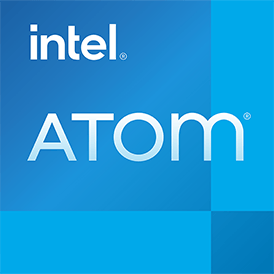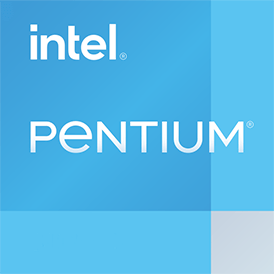Intel Atom C3308 vs Intel Pentium D 915
Ultimo aggiornamento:
Confronto con benchmark

|

|
|
| Intel Atom C3308 | Intel Pentium D 915 | |
Confronto CPUIn questo confronto della CPU, confrontiamo Intel Atom C3308 e Intel Pentium D 915 e utilizziamo i benchmark per verificare quale processore è più veloce.
Confrontiamo il Intel Atom C3308 2 core processor rilasciato in Q3/2017 con il Intel Pentium D 915 che ha 2 Core della CPU ed è stato introdotto in Q3/2006. |
||
| Intel Atom (108) | Famiglia | Intel Pentium (150) |
| Intel Atom C3000 (20) | Gruppo CPU | Intel Pentium D (6) |
| 5 | Generazione | 0 |
| Denverton | Architettura | Presler |
| Desktop / Server | Segmento | Desktop / Server |
| -- | Predecessore | -- |
| -- | Successore | -- |
|
|
||
CPU Cores e frequenza di baseIl Intel Atom C3308 è un 2 core processor con una frequenza di clock del 1,60 GHz (2,10 GHz). Il processore può calcolare 2 thread contemporaneamente. Intel Pentium D 915 clock con 2,80 GHz, ha 2 core CPU e può calcolare 2 thread in parallelo. |
||
| Intel Atom C3308 | Caratteristica | Intel Pentium D 915 |
| 2 | Cores | 2 |
| 2 | Threads | 2 |
| normal | Architettura principale | normal |
| No | Hyperthreading | No |
| No | Overclocking ? | No |
| 1,60 GHz | Frequenza | 2,80 GHz |
| 2,10 GHz | Turbo Frequenza (1 Core ) | -- |
| 2,10 GHz | Turbo Frequenza (Tutti Cores) | -- |
Memoria & PCIe128 GB di memoria in un massimo di 1 canali di memoria sono supportati da Intel Atom C3308, mentre Intel Pentium D 915 supporta un massimo di GB di memoria con una larghezza di banda di memoria massima di -- abilitata. |
||
| Intel Atom C3308 | Caratteristica | Intel Pentium D 915 |
| DDR4-1866 | Memoria | DDR2 |
| 128 GB | Max. Memoria | |
| 1 (Single Channel) | Canali di memoria | 0 |
| 29,9 GB/s | Max. Larghezza di banda | -- |
| Si | ECC | No |
| 4,00 MB | L2 Cache | 4,00 MB |
| -- | L3 Cache | -- |
| 3.0 | Versione PCIe | -- |
| 6 | Linee PCIe | -- |
| 5,9 GB/s | PCIe Larghezza di banda | -- |
Gestione termicaIntel Atom C3308 ha un TDP di 9.5 W. Il TDP di Intel Pentium D 915 è 95 W. Gli integratori di sistema utilizzano il TDP del processore come guida per il dimensionamento della soluzione di raffreddamento. |
||
| Intel Atom C3308 | Caratteristica | Intel Pentium D 915 |
| 9.5 W | TDP (PL1 / PBP) | 95 W |
| -- | TDP (PL2) | -- |
| -- | TDP up | -- |
| -- | TDP down | -- |
| 100 °C | Tjunction max. | -- |
Dettagli tecniciIntel Atom C3308 ha 4,00 MB di cache ed è prodotto in 14 nm. La cache di Intel Pentium D 915 è a 4,00 MB. Il processore è prodotto in 65 nm. |
||
| Intel Atom C3308 | Caratteristica | Intel Pentium D 915 |
| 14 nm | Tecnologia | 65 nm |
| Monolitico | Design a chip | Monolitico |
| x86-64 (64 bit) | Set di istruzioni (ISA) | x86-64 (64 bit) |
| SSE4.1, SSE4.2 | Estensioni ISA | -- |
| BGA 1310 | Presa | LGA 775 |
| VT-x, VT-x EPT, VT-d | Virtualizzazione | Nessuno |
| Si | AES-NI | No |
| Windows 10, Linux | Sistemi operativi | Windows 10, Linux |
| Q3/2017 | Data di lancio | Q3/2006 |
| 41 $ | Prezzo di rilascio | 74 $ |
| mostra più dati | mostra più dati | |
Valuta questi processori
Cinebench R23 (Single-Core)
Cinebench R23 è il successore di Cinebench R20 ed è anch'esso basato su Cinema 4D. Cinema 4D è un software usato a livello mondiale per creare forme in 3D. Il test single-core utilizza solo un nucleo elaborativo della CPU. A tal fine, il numero di nuclei elaborativi o la capacità di hyperthreading non sono rilevanti.
|
|
Intel Atom C3308
2C 2T @ 2,10 GHz |
||
|
|
Intel Pentium D 915
2C 2T @ 2,80 GHz |
||
Cinebench R23 (Multi-Core)
Cinebench R23 è il successore di Cinebench R20 ed è anch'esso basato su Cinema 4D. Cinema 4D è un software usato a livello mondiale per creare forme in 3D. Il test multi-core coinvolge tutti i nuclei elaborativi della CPU e si avvale del hyperthreading.
|
|
Intel Atom C3308
2C 2T @ 2,10 GHz |
||
|
|
Intel Pentium D 915
2C 2T @ 2,80 GHz |
||
Geekbench 5, 64bit (Single-Core)
Geekbench 5 è un benchmark multi-piattaforma che usa in modo intensivo la memoria del sistema.Il test single-core utilizza solo un nucleo elaborativo della CPU. A tal fine, il numero di nuclei elaborativi o la capacità di hyperthreading non sono rilevanti.
|
|
Intel Atom C3308
2C 2T @ 2,10 GHz |
||
|
|
Intel Pentium D 915
2C 2T @ 2,80 GHz |
||
Geekbench 5, 64bit (Multi-Core)
Geekbench 5 è un benchmark multi-piattaforma che usa in modo intensivo la memoria del sistema.Il test multi-core coinvolge tutti i nuclei elaborativi della CPU e si avvale del hyperthreading.
|
|
Intel Atom C3308
2C 2T @ 2,10 GHz |
||
|
|
Intel Pentium D 915
2C 2T @ 2,80 GHz |
||
Cinebench R20 (Single-Core)
Cinebench R20 è il successore di Cinebench R15 ed è anch'esso basato su Cinema 4D. Cinema 4D è un software usato a livello mondiale per creare forme in 3D. Il test single-core utilizza solo un nucleo elaborativo della CPU. A tal fine, il numero di nuclei elaborativi o la capacità di hyperthreading non sono rilevanti.
|
|
Intel Atom C3308
2C 2T @ 2,10 GHz |
||
|
|
Intel Pentium D 915
2C 2T @ 2,80 GHz |
||
Cinebench R20 (Multi-Core)
Cinebench R20 è il successore di Cinebench R15 ed è anch'esso basato su Cinema 4D. Cinema 4D è un software usato a livello mondiale per creare forme in 3D. Il test multi-core coinvolge tutti i nuclei elaborativi della CPU e si avvale del hyperthreading.
|
|
Intel Atom C3308
2C 2T @ 2,10 GHz |
||
|
|
Intel Pentium D 915
2C 2T @ 2,80 GHz |
||
Risultati stimati da PassMark CPU Mark
Alcune delle CPU elencate di seguito sono stati sottoposti a benchmarking da CPU-monkey. Tuttavia, la maggior parte delle CPU non sono state testate e i risultati sono stati stimati utilizzando una formula segreta di proprietà di CPU-monkey. Come tali, essi non riflettono con precisione i valori attuali di Passmark CPU Mark e non sono stati approvati da PAssMark Software Pty Ltd.
|
|
Intel Atom C3308
2C 2T @ 2,10 GHz |
||
|
|
Intel Pentium D 915
2C 2T @ 2,80 GHz |
||
Cinebench R15 (Single-Core)
Cinebench R15 è il successore di Cinebench 11.5 ed è anch'esso basato su Cinema 4D. Cinema 4D è un software usato a livello mondiale per creare forme in 3D. Il test single-core utilizza solo un nucleo elaborativo della CPU. A tal fine, il numero di nuclei elaborativi o la capacità di hyperthreading non sono rilevanti.
|
|
Intel Atom C3308
2C 2T @ 2,10 GHz |
||
|
|
Intel Pentium D 915
2C 2T @ 2,80 GHz |
||
Cinebench R15 (Multi-Core)
Cinebench R15 è il successore di Cinebench 11.5 ed è anch'esso basato su Cinema 4D. Cinema 4D è un software usato a livello mondiale per creare forme in 3D. Il test multi-core coinvolge tutti i nuclei elaborativi della CPU e si avvale del hyperthreading.
|
|
Intel Atom C3308
2C 2T @ 2,10 GHz |
||
|
|
Intel Pentium D 915
2C 2T @ 2,80 GHz |
||
Dispositivi che utilizzano questo processore |
|
| Intel Atom C3308 | Intel Pentium D 915 |
| Sconosciuto | Sconosciuto |
I confronti più popolari che contengono questa CPU
Torna all'indice
